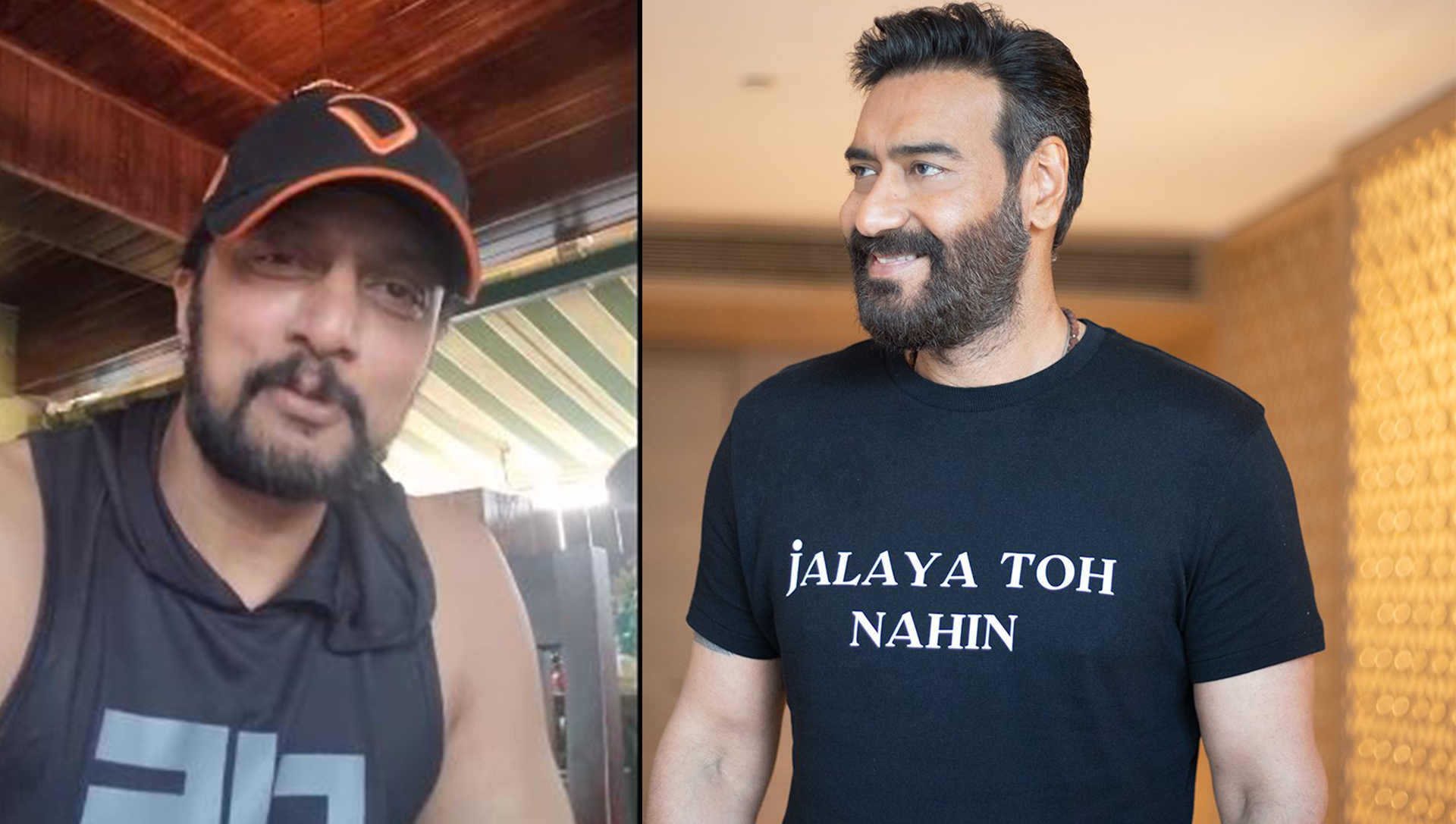

BENGALURU: Bollywood star Ajay Devgn on Wednesday kicked up a furore when he tweeted that Hindi is the national language of India. What added fuel to the fire is the fact that his tweet was directed at Kannada actor Kichcha Sudeepa.
Hello @ajaydevgn sir.. the context to why i said tat line is entirely different to the way I guess it has reached you. Probably wil emphasis on why the statement was made when I see you in person. It wasn't to hurt,Provoke or to start any debate. Why would I sir 😁 https://t.co/w1jIugFid6
— Kichcha Sudeepa (@KicchaSudeep) April 27, 2022
“My brother, if Hindi is not our national language, then why do you (South actors) dub your films in Hindi and release them? Hindi was our national language and will always remain so,” he tweeted.
Sudeepa came up with a ripping riposte as he said, “Hello @ajaydevgn sir. The context to why I said that line is entirely different to the way I guess it has reached you. Probably will emphasize on why the statement was made when I see you in person. It wasn’t to hurt, provoke or to start any debate,” he said.
“I did understand the text you sent in Hindi. That’s only because we all have respected, loved and learnt Hindi. No offence sir, but I was wondering what the situation would be if my response was typed in Kannada. Don’t we too belong to India sir,” he added.
First things first. Devgn’s assertion that Hindi is India’s national language is patently disingenuous. According to the Constitution, Hindi and English are the official languages of India. Of course, Hindi is the most widely spoken language in India and is subliminally considered as lingua franca.
However, we must not miss the woods for the trees and get embroiled in the ‘national language’ debate. It is essential to comprehend the context of Devgn’s assertions.
His film ‘RUNWAY 34’, which is also directed by him, is slated to release on Friday. The movie is clashing at the box-office with Tiger Shroff’s ‘HEROPANTI 2’, hence both the actors are leaving no stones unturned to grab the eyeballs. Devgn’s tweet is seen as a tactic to garner publicity and hog the limelight for his movie. But the overarching narrative is Bollywood stars are wary of the inroads South (dubbed) movies and actors making into the Hindi heartland.
After the cinemas opened at full tilt in November after the 3rd wave, the three biggest blockbusters in Hindi-speaking circuits are ‘Pushpaa’, ‘RRR’ and ‘KGF – Chapter 2’. The important thing to note here is that Hindi dubbed versions of these movies (not just their regional-language versions) have garnered far more collections than other Bollywood movies such as ‘Sooryavanshi’ and ‘Gangubai Kathiawadi’.
At the time of going to print, SS Rajamouli’s ‘RRR’ has clocked up more than Rs 250 crore nett (Hindi dubbed) and ‘KGF – Chapter 2’ has hoovered up around Rs 330 crore nett. The highest grossing Bollywood film at present is Aamir Khan’s ‘Dangal’ which collected Rs 380 crore net in 2016. ‘KGF – Chapter 2’ is slated to leapfrog it by the end of its third week.
Clearly, Hindi-speaking audiences are more inclined towards Southern movies and stars and that has sent alarm bells ringing in the Bollywood corridors.
Speaking to The New Indian, veteran trade analyst Taran Adarsh said, “In the 1970s and 1980s, Bollywood used to churn out wholesome entertainers. Stars like Amitabh Bachchan, Dharmendra and others used to patronise such films. Manmohan Desai movies were the embodiment of well-made masala films. But after the advent of multiplexes, our makers started focusing more on subjects which are aimed at urban and genteel audiences. A section of Bollywood started making what I call ‘Bandra to Versova’ movies. They strayed from the traditional format and the viewers in the Hindi belts, outside big cities, weren’t feeling fully satiated.”
“On the other hand, the South has never deviated from making wholesome masala entertainers. Yes, they make meaningful cinema as well, but their makers have held onto their roots. Because a large segment of the Hindi audience isn’t feeling satiated, movies from the South are offering them what they want. The popularity of many South stars has also soared because of satellite channels which show Hindi dubbed versions of their films,” he added.
“The record-breaking success of ‘KGF – Chapter 2’ has once again evinced that well-made wholesome entertainers are the staple diet of the Hindi audience. This kind of cinema is here to stay and will always find plentiful patrons,” he opined.
The producer and veteran trade analyst, Girish Johar, thinks the lockdown has changed the mindset of the audience. “During the lockdown, the audience in the Hindi belt consumed a lot of content on streaming platforms. They watched a string of movies from other languages and that exposure has changed their viewing habits. They are now willing to embrace stars and movies of other languages as well, and are not entirely dependent on Bollywood for their fill of entertainment,” he proclaimed.
“It is about stellar content now. Language barriers have been broken. Bollywood no longer has hegemony over Hindi-speaking audiences,” he concluded.